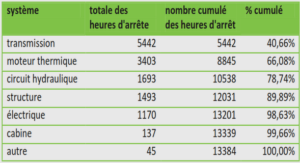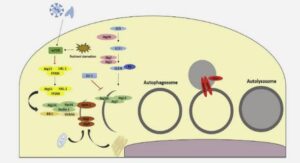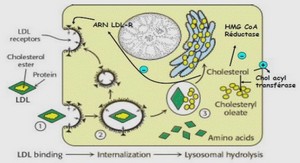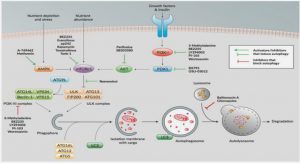Modélisation de l’hydrologie continentale et influences de l’irrigation sur le cycle de l’eau
Simulation de l’humidité du sol à haute résolution
Introduction du chapitre
Ce chapitre est constitué d’un article rédigé en anglais qui sera soumis à HESS (Hydrology and Earth System Sciences). Dans ce chapitre, l’article est précédé d’une introduction en français et suivi d’une conclusion également rédigée en français. L’humidité du sol est une composante essentielle du cycle de l’eau du fait de son impact sur la détermination de la répartition entre les ux de chaleur sensible et latente. De plus, la disponibilité en eau du sol conditionne directement la transpiration du couvert végétal. C’est d’ailleurs cette relation qui sera mise en évidence avec SECHIBA dans cette étude. Enn, le ruissellement de surface est aecté par la quantité d’eau dans les sols. La principale hypothèse du module hydrologique de Choisnel type Bucket repose sur cette relation humidité du sol et écoulement : ce dernier est produit uniquement lorsque la capacité au champ du sol est atteinte. Lors de la thèse de Ngo-Duc (2006), une comparaison de l’humidité du sol sur l’Illinois a été faite entre SECHIBA, forcé par quatre forçages diérents dont NCC (NCEP/NCAR (National Center for Atmospheric Research) Corrected by CRU (Climatic Research Unit), http://thanh.ngoduc.free.fr/wiki/index.php/Main/NCCDataset), et les observations sur la période 1987-1988. Des quatre simulations, aucune ne reproduit correctement la saisonnalité en humidité des sols. Pour expliquer cela, les hypothèses comme la faible résolution des modèles pour représenter des processus à petite échelle, la faible capacité maximale en contenu en eau dans SECHIBA, ou encore la simplicité du modèle de Choisnel ont été avancées. Dans mon étude, j’ai choisi de garder le même module hydrologique pour eectuer ce même travail de comparaison. Cependant, SECHIBA est à présent forcé par des données atmosphériques à hautes résolutions, spécialement construites sur les U.S.A.. Ainsi, la résolution de SECHIBA s’adaptant à celle du forçage NLDAS au huitième de degré, nous pouvons comparer avec plus de conance les résultats de simulation du modèle forcé à haute résolution à des observations de stations. La surface de la maille du modèle passe alors d’environ de 10000 km2 à 150 km2 quand on compare une résolution habituellement utilisée au LMD en oine à celle de NLDAS. Cette dernière valeur est sûrement encore insusante pour une comparaison modèle-données in-situ mais une telle résolution est néanmoins considérée comme ne de nos jours dans la communauté du climat. De plus, le principal résultat de mon étude est de montrer que le fait d’adapter les paramètres de végétations du modèle dans le but de se rapprocher au mieux des conditions expérimentales réduit grandement les erreurs entre les résultats de SECHIBA et les observations. Ensuite, l’incertitude sur les données atmosphériques comme les précipitations et leur impact sur l’humidité du sol sera abordée. Hollinger et al. (1994) donne une description complète des 19 stations ICN (Illinois Climate Network) recueillant les observations climatiques sur l’Illinois et seront utilisées dans mon étude. Le climat de l’Illinois est typiquement continental avec des hivers froids (-2.2°C en moyenne) et des étés chauds (23°C en moyenne) et présente des précipitations très contrastées nord/sud : 1220 mm.an−1 en moyenne au sud et 813 mm.an−1 au nord. En revanche la distribution de la neige (exprimée ici en épaisseur) est plus conséquente au nord (914 mm.an−1 ) qu’au sud (moins de 254 mm.an−1 ). Mai et juin sont typiquement les mois les plus pluvieux ; janvier et février les plus secs. Ainsi, l’humidité des sols doit être très sensible à cette variabilité de précipitations sur l’Illinois. Enn, les incertitudes portant sur les observations d’humidité du sol seront aussi discutées.
Article 50
Soil moisture simulated with SECHIBA forced by NLDAS over the state of Illinois: comparison with measurements M. GUIMBERTEAU1 , K. LAVAL1 , A. PERRIER2 and J. POLCHER1 1 Laboratoire de Météorologie Dynamique, CNRS, Paris, France 2 AgroParisTech, UFR Physique de l’Environnement, Paris, France The purpose of this study is to test the ability of the Land Surface Model SECHIBA to compute water budget and particularly to simulate soil moisture. The model was forced by NLDAS data set at eighth degree resolution over the time period 1997-1999. SECHIBA gives satisfying results in term of evapotranspiration and runo over U.S.A. compared with four other land surface models, all forced by NLDAS data set for a common time period. Then we have compared the simulated soil moisture to the Global Soil Moisture Database across Illinois. With default values of vegetation parameters, the model overestimates soil moisture, particularly during summer. Sensitivity tests of the model to the change of vegetation parameters have been performed and they showed that the roots extraction parameter has the most important impact on soil moisture. The others parameters as LAI, height or soil resistance have a minor impact. New computations of vegetation transpiration, evaporation of water intercepted by the cover and bare soil evaporation under vegetation induce more total evapotranspiration and consequently a simulated soil moisture closer to the observations. Uncertainty in forcing precipitations to simulate a realistic soil moisture is addressed. It is shown that soil moisture observations can be rather dierent because of the uncertainty in eld capacity measurement. Our results are very close to the observations when we reduce this bias. Excepted for one station, the monthly mean correlation is around 0.9 between observations and simulation. Keywords: NLDAS, soil moisture, SECHIBA, SWI
Introduction Soil moisture is a crucial component of the water cycle
It strongly inuences the partition of surface uxes between latent and sensible heat. It impacts on evapotranspiration and consequently on the turbulent uxes into the boundary layer and also on surface runo. D’Odorico and Porporato (2004)showed a dependence between summer precipitations and antecedent soil moisture conditions. Findell and Eltahir (1997) have found a correlation between an initial state of soil moisture at saturation and rainfall during summer studying observed data from Illinois. In climate simulations using land surface model (LSM) coupled to Global Circulation Model (GCM), the capture of the variation of soil moisture state during the year is important in order to have realistic feedback between continental surface and atmosphere. Much works have focused on the sensitivity of LSMs uxes to soil moisture (Dirmeyer et al., 2000). The aim of this paper is to give an overview of the validity of three water cycle components simulated by the LSM SECHIBA at dierent spatial scales: total evaporation, total runo and soil moisture. We compare SECHIBA evaporation and total runo outputs to four other LSMs over U.S.A., all forced by the same atmospheric forcing data set, NLDAS (Cosgrove et al., 2003), at (1/8) th degree resolution. Soil moisture simulated by SECHIBA, forced by NLDAS, is studied in more details over the state of Illinois comparing with in-situ observations. Robock et al. (2000) contributed to merge into a database up to 15 years in-situ recordings of soil moisture over more than 600 stations of many countries (such as Russia, China, Mongolia, India and U.S.A.). Consequently, it allows comparison between soil moisture observations and land surface model outputs. We test in this study the ability of the LSM SECHIBA to simulate monthly variation of soil moisture over the time period 1997-1999. The role of some parameters on soil moisture seasonality is highlighted through series of simulation.
Measurements of soil moisture across Illinois
The Soil Wetness Index. The measurements of soil moisture content used for the comparison with our LSM outputs were performed across the state of Illinois (U.S.A.) with neutron probes at eight grass-covered sites in 1981. Then seven sites were added in 1982, two more in 1986 and nally, since 1992, nineteen Illinois Climate Network (ICN) stations (see Table 4.5 in appendix A) have collected data especially soil moisture and precipitations. Soil moisture measurements were established on eighteen grass-covered stations and one on bare soil over the time period 1981-2004. They were taken within 11 soil layers to a depth of two meters; the rst in the top 0.1m of the prole, then every 0.2m from a depth of 0.1m through 1.9m, and the last in the layer between 1.9m and 2.0m. Each site was visited twice each month: the week of the 15th and the week of the last day of the month during March through September, and once each month during the last week of October through February (Hollinger and Isard, 1994). The Soil Wetness Index (SWI) is used to describe the state of soil moisture. It is useful to compare soil moisture between LSMs outputs (Dirmeyer et al., 2000) but also between in-situ observations (Saleem and Salvucci, 2002). In this paper, soil moisture from SECHIBA outputs and observations data are compared through this index. SWI gives a simple representation of the water stress for the vegetation and indicates the actual available soil water for plants at each time: it ranges between 0 (lower this value, no more soil water can be extracted by the roots) to 1 (upper this value, no more water can be retained by the soil). Its expression is given by the following equation: SW I = W − Wwilt Wfc − Wwilt (4.1) where W (kg.m−2 ) is the actual equivalent water depth stored in the soil, Wwilt (kg.m−2 ) the equivalent water depth at the wilting point of the soil (determined by the soil and the 52 4.2. ARTICLE vegetation properties) and Wfc (kg.m−2 ) the eld capacity (based on soil texture alone) which represents the retained water in a natural soil after gravitation action.
Brief description of the forcing and the LSM used
NLDAS forcing data set In order to give atmospheric informations of the precise study time period to the model, an atmospheric forcing data set called NLDAS (North american Land Data Assimilation System, Cosgrove et al., 2003) is used. It covers all the United States and a part of Canada and Mexico (Cosgrove et al., 2003). It has a time resolution of hourly time-step and a spatial resolution of (1/8) th degree latitude-longitude which is quite high compared to the current forcing resolution for LSMs around half degree. This high resolution is useful to study land surface processes at regional scales with better condence. NLDAS data set is a combination of EDAS (Eta Data Assimilation System) models outputs, observation-based precipitations and shortwave radiation data. Precipitations forcing was built with Stage II hourly Doppler Radar and River Forecast Center gauge data (Baldwin and Mitchell, 1997), Climate Prediction Center daily gauge data (Higgins et al., 2000) and reprocessed daily gauge data. Observed shortwave values are derived from Geostationary Operational Environmental Satellite radiation data processed at the University of Maryland and at the National Environmental Satellite data and Information Service (Pinker et al., 2003). The nine primary forcing elds of the forcing used for this study are summed up in Table 4.1.
1 Introduction générale : cycle de l’eau et enjeux |






